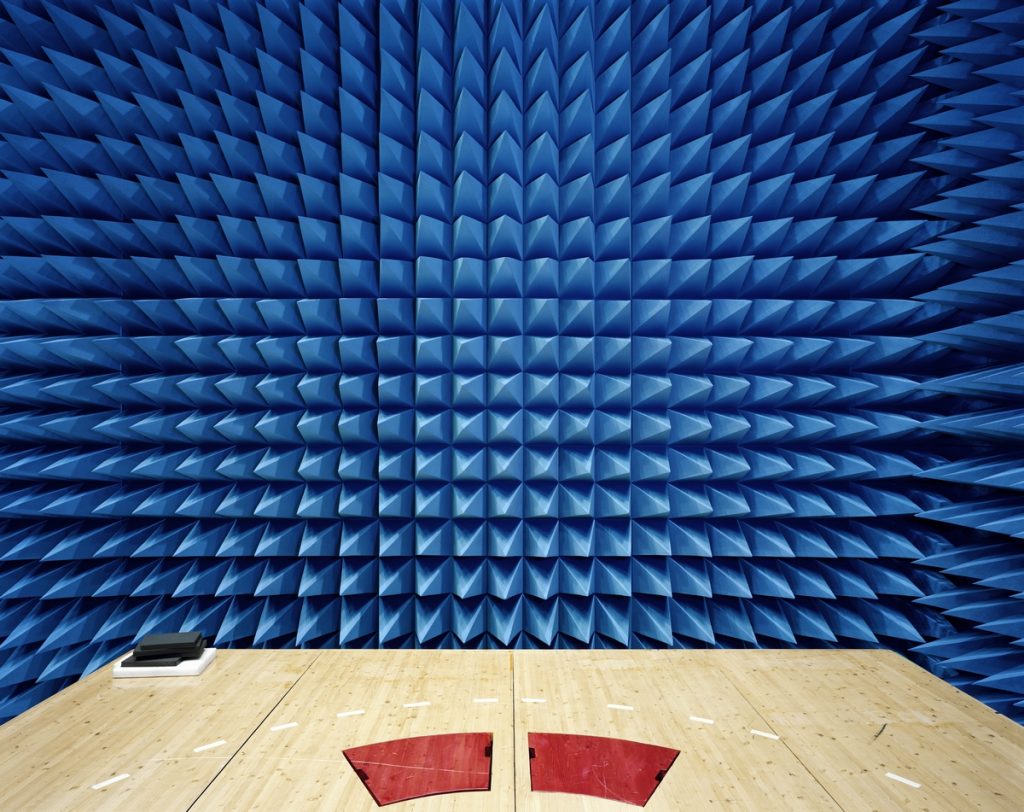The electromagnetic spectrum starts with long radio waves and extends through visible light all the way to highly energetic x-rays and gamma rays. All electronics emit some form of electromagnetic waves – wireless internet, FM radio and Bluetooth are all forms of electromagnetic emissions. These emissions can, however, interfere with other devices and space on the spectrum is limited. Ever wonder about that distinct buzz that speakers give out before receiving a call on your mobile phone?
This is a classic case of electromagnetic interference: the cell tower is communicating with your phone at higher energies that are picked up by the amplifier and turned into sound.
What does this have to do with spacecraft? Spacecraft use the electromagnetic spectrum for scientific measurements and for communication in space. However, as they are also made of electric equipment, they create their own electromagnetic interference, and even far from Earth they can be susceptible to interference. Unlike a buzzing speaker, any interference in Orion’s complex and precise electronics could have disastrous effects and so every element must be tested extensively.
In particular, transmitters that intentionally generate radio frequencies can disturb other equipment. Equipment that is sensitive to electromagnetic noise include GPS receivers, tele-command modules and communication elements.
Setting up
Orion completed its thermal vacuum tests on 9 February and started electromagnetic compatibility testing just two weeks later, on 22 February. A regular test for spacecraft, electromagnetic compatibility or EMC testing usually takes in specially built shielded rooms with metal walls and doors that form a ‘Faraday cage’ to block unwanted external electromagnetic radiation. EMC testing rooms, such as the Maxwell chamber at ESA’s technical heart in ESTEC, the Netherlands, are also clad in a spiky foam that absorbs the electromagnetic emissions to form an ‘anechoic’ chamber to prevent reflections from the wall and make measurements possible.

There is no specific anechoic chamber in NASA’s Plum Brook Station where Orion is, but the walls of the thermal vacuum chamber are made of aluminium, which forms a suitable Faraday cage.
“Because the vacuum chamber is so large, installing the absorption spikes was not an option so NASA had to think of another technique,” explains ESA’s Johannes Wolf, Head of the EMC and harness section. “The multiple reflections of the radio waves are not absorbed by spikes but reflected from the side walls, floor and ceiling multiple times to reach the equipment being tested from all possible directions and this is in our favour.” To speed up the test, four frequencies are injected simultaneously. “This approach worked very well during tests in preparation for Artemis.”
The temperature sensors placed around Orion for the thermal tests were removed as they are not necessary for this test. Instead, seven electromagnetic field sensors were placed around the vehicle to monitor the external field and two sensors were placed inside the crew module to record the emissions inside.
Testing, testing
Orion is tested for self-induced emissions that come from the electrical components inside the spacecraft as well as from emissions from outside. On the electronics side, the spacecraft will simulate flight in realistic operating conditions with most subsystems and equipment powered and in operational mode.
For the first part of the test, called self- or auto-compatibility, Orion is protected from outside disturbances and all equipment and subsystems are switched on in turn to check if any subsystem causes disturbance to any of the others.
Induced disturbance
The second round of testing involves interference, or susceptibility test, for radiated disturbances.
You might assume that in space electromagnetic disturbances are not an issue – there is no neighbourhood wireless network or Bluetooth speakers after all – but radio frequency transmitters on the spacecraft and navigation satellites can still be problematic.
Electromagnetic fields are applied to Orion at Plum Brook using antennas around the spacecraft and each subsystem is checked using a software script to ensure they function as intended. The electromagnetic fields are created and stepped through each four frequencies at a time as the spacecraft is checked – a total of 19 runs.
The tests will take around two weeks even though several hundred components have to pass each radio frequency step. “To a large extent the tests are automated, but still require time,” explains Johannes. “To speed things up, we run four frequencies at the same time, as long as no disturbance is detected, the next four frequencies are tested and so on until completion.”
“The price to pay here in case of a disturbance is that it takes longer to find the source of the problem: first we must switch to a single frequency and find out which of the four is the disturbance, and then we need to reduce the level of the applied field until the disturbance disappears to determine the susceptibility threshold,” concludes Johannes.




 Automated Transfer Vehicle page
Automated Transfer Vehicle page ATV blog archive
ATV blog archive
Discussion: no comments